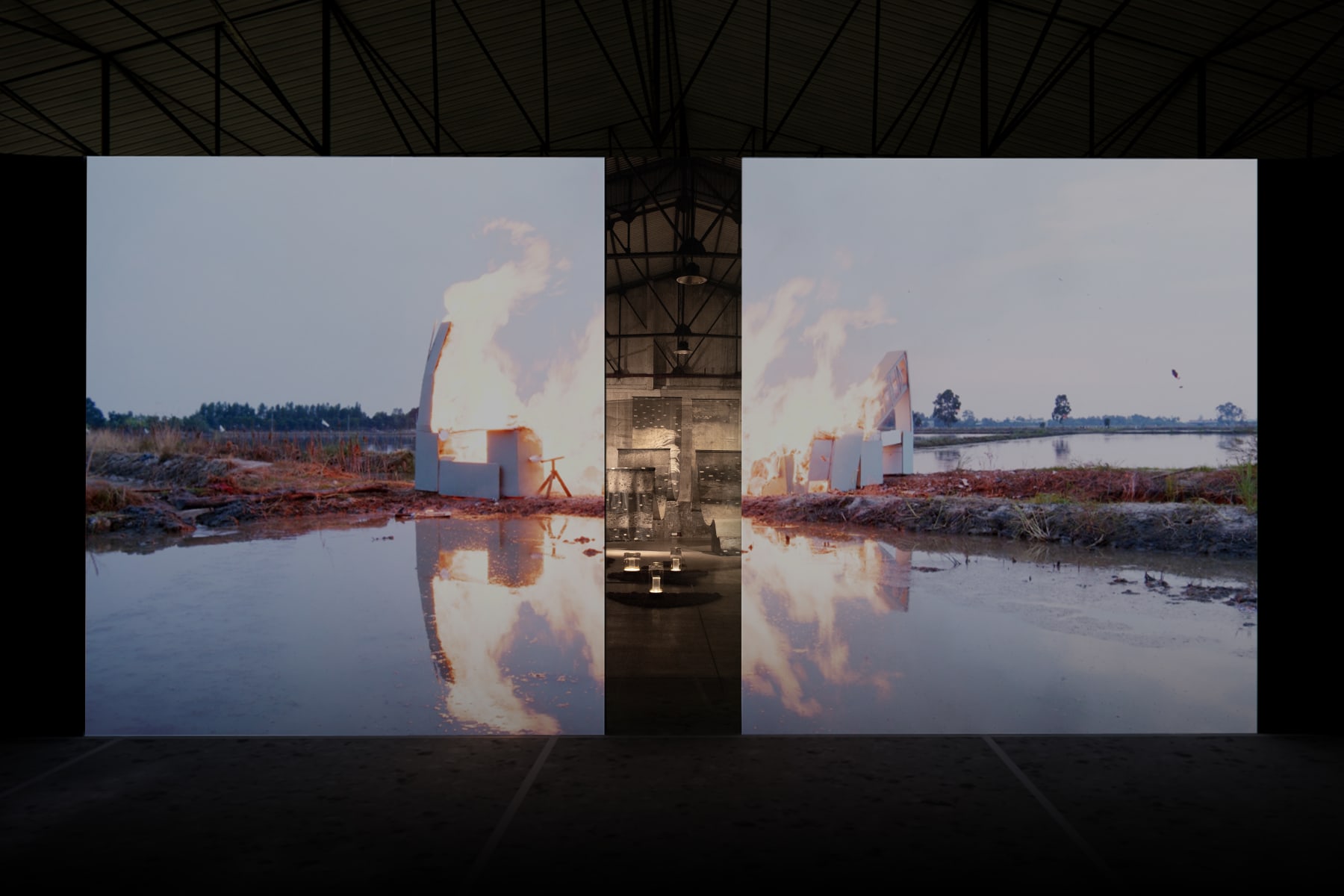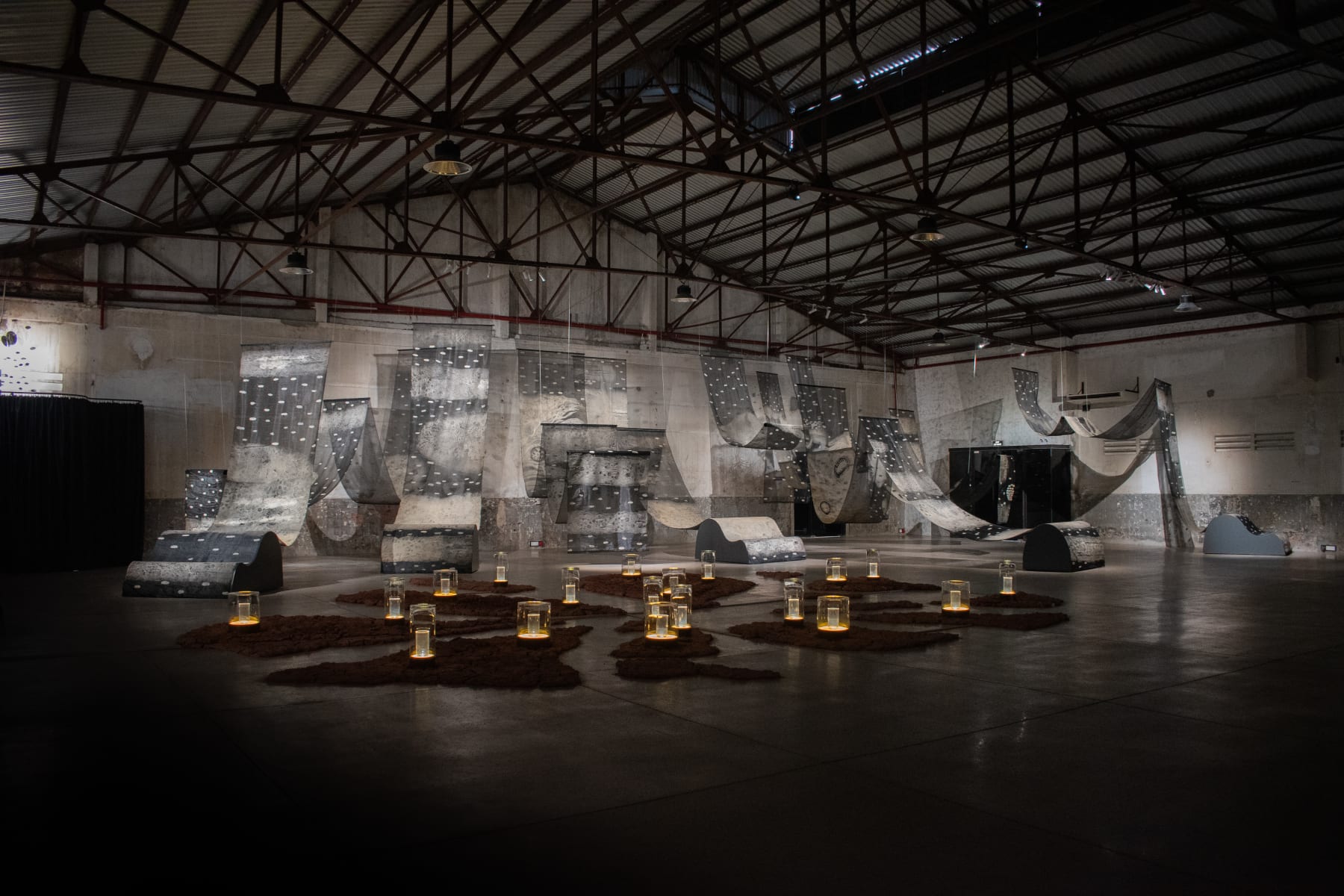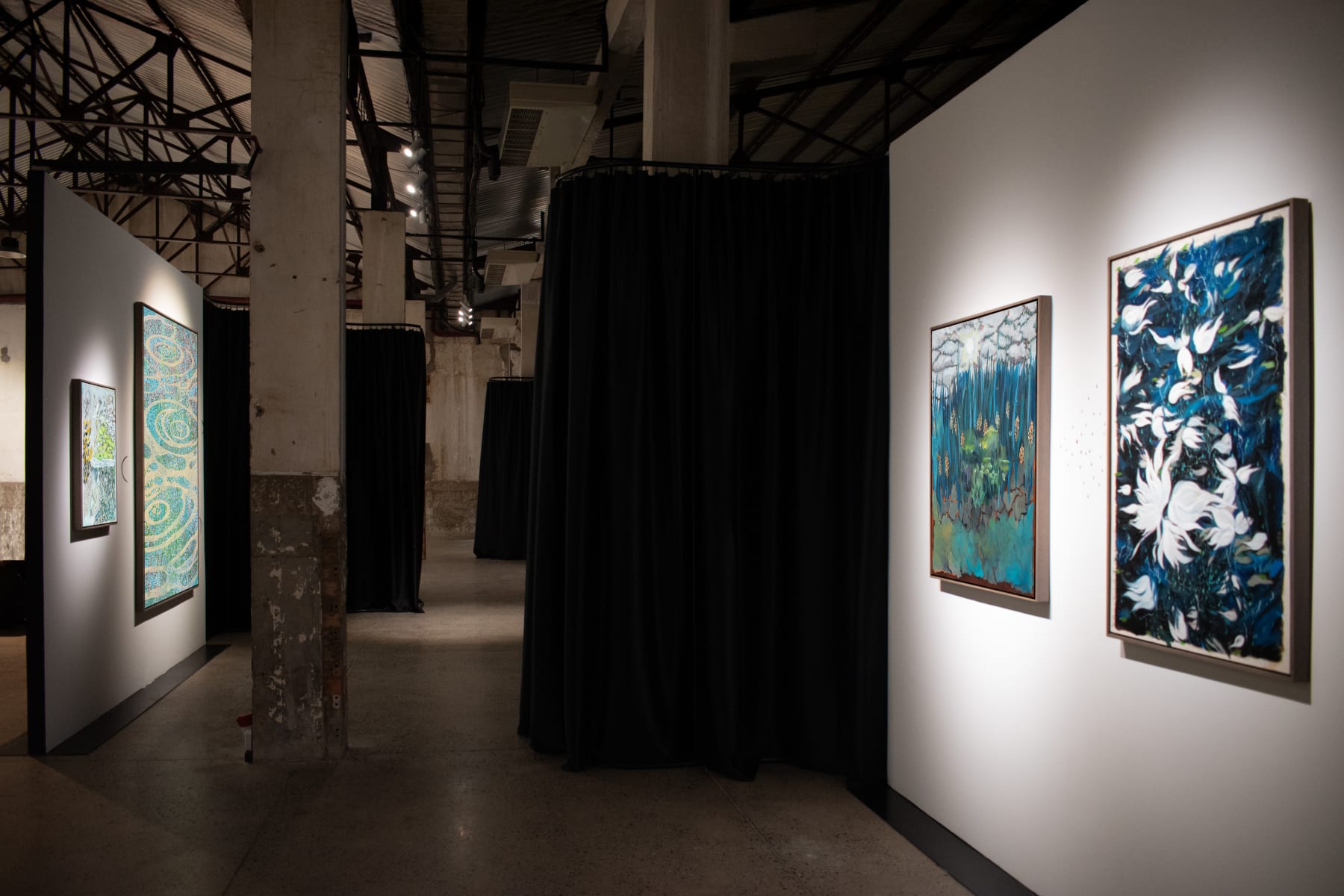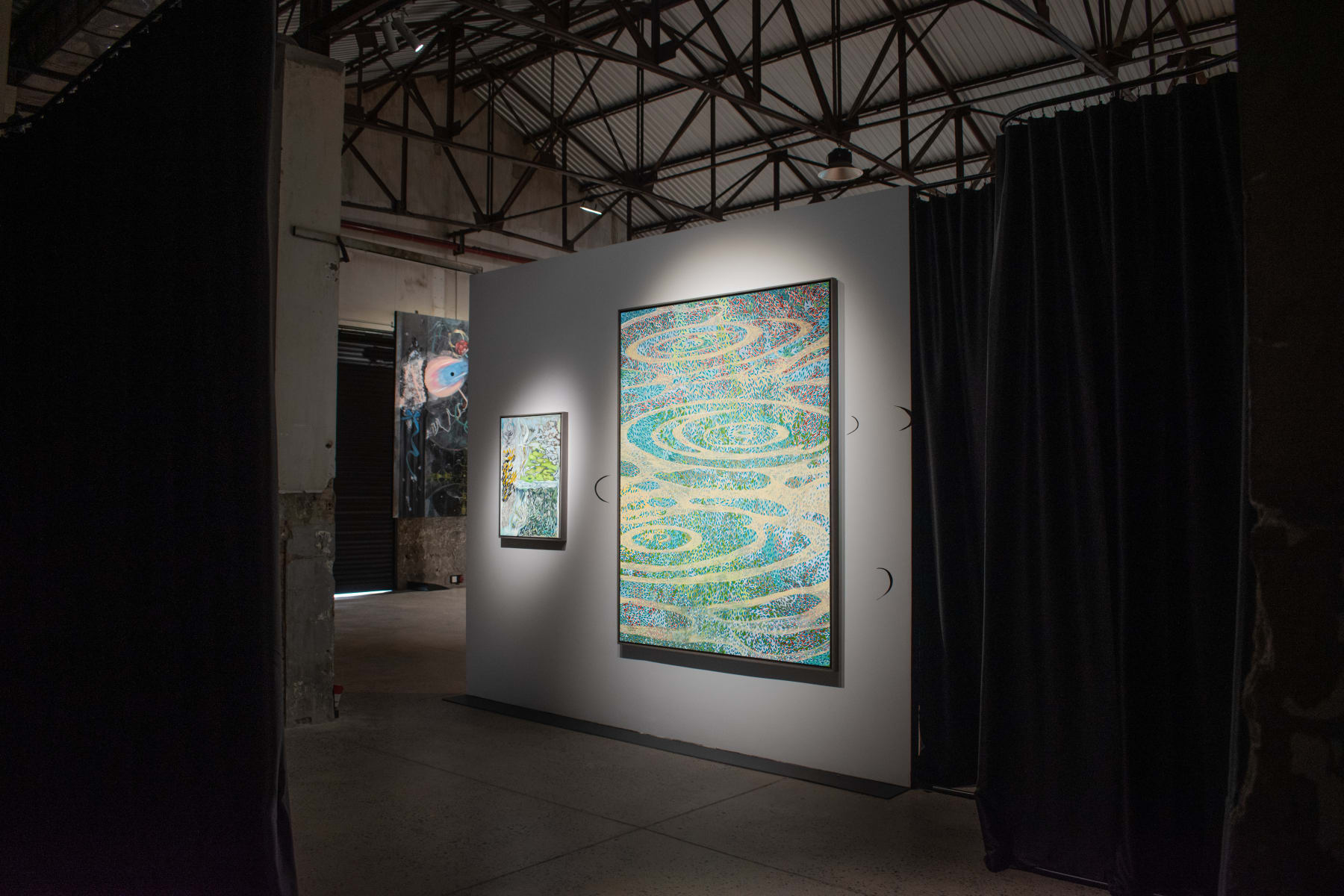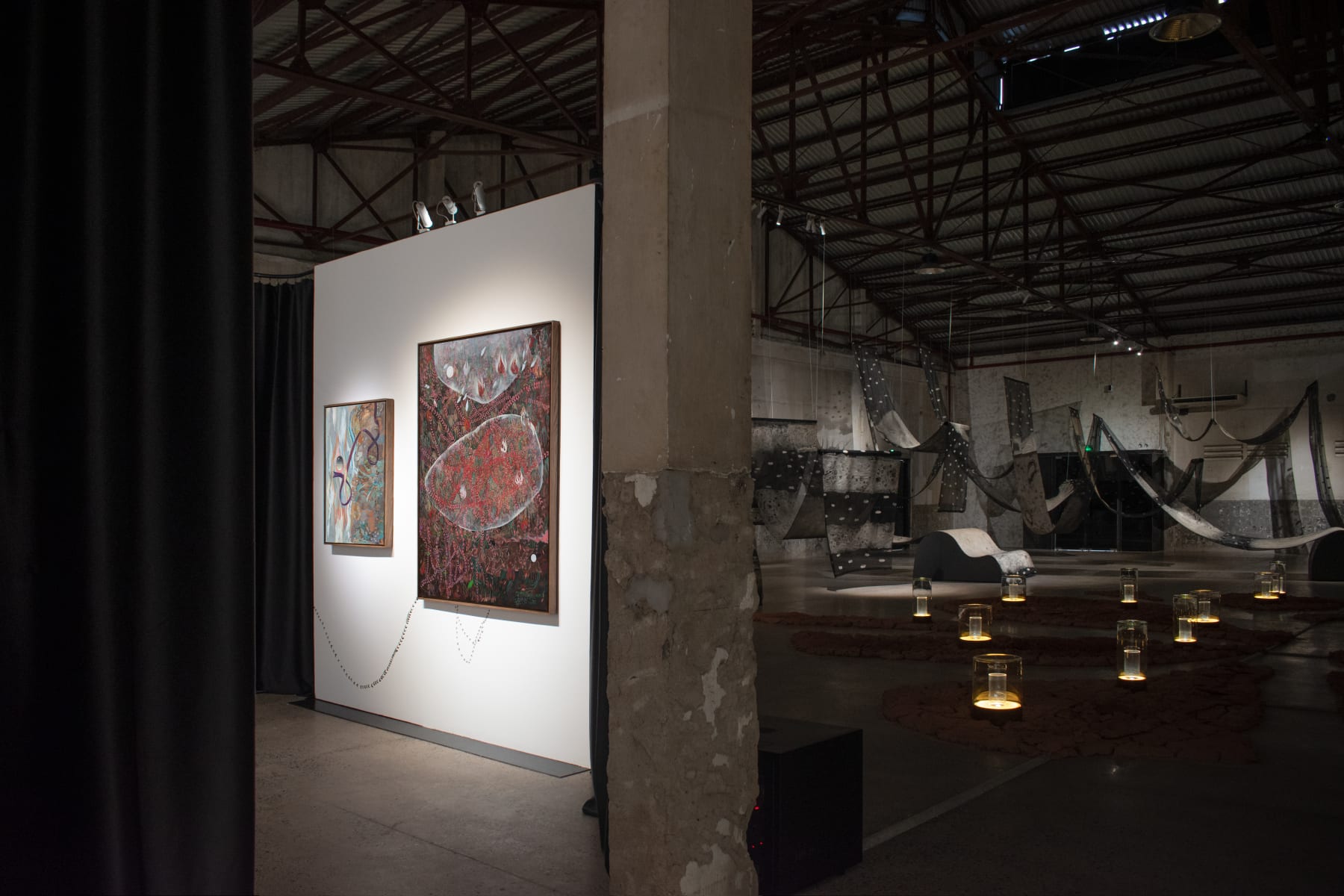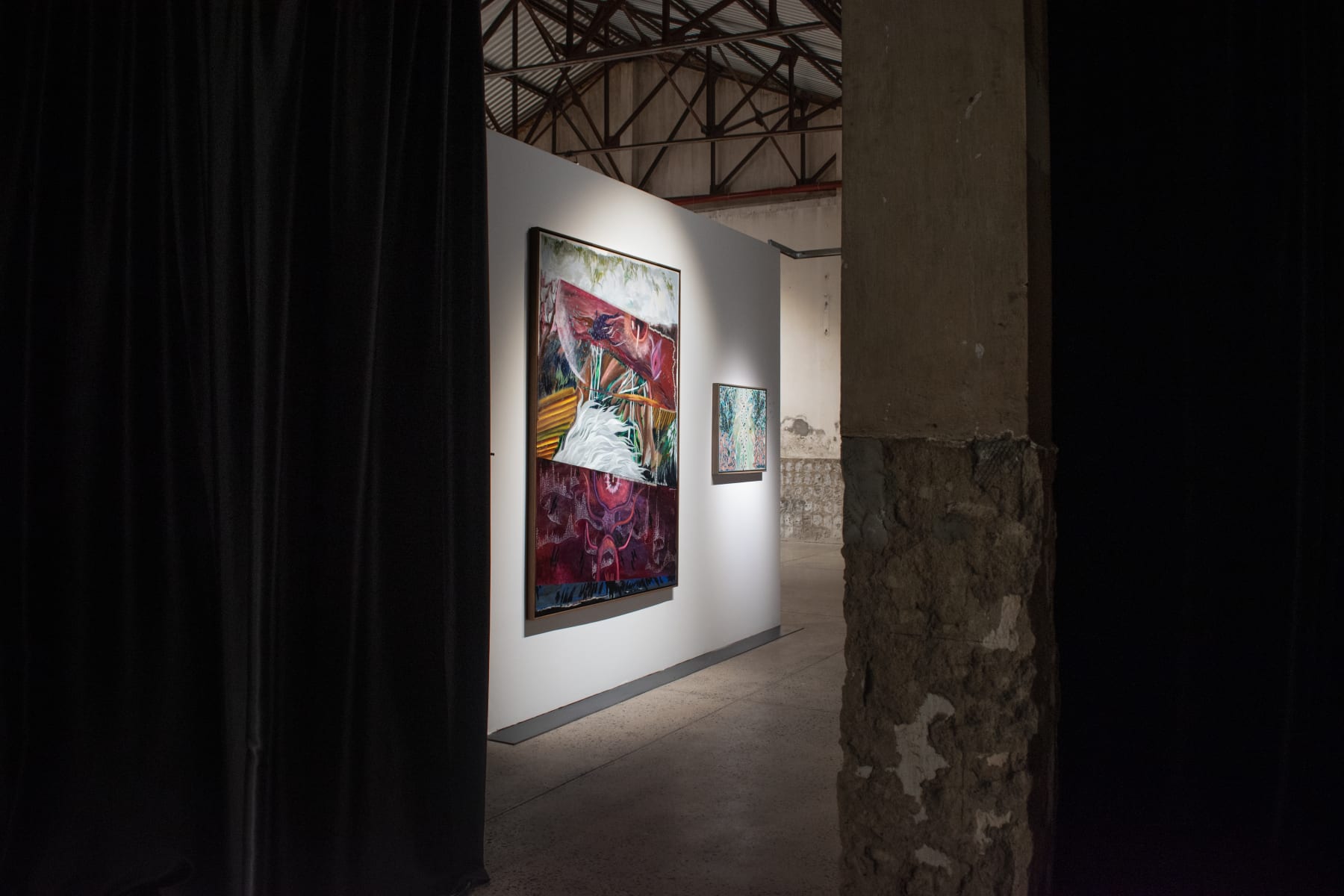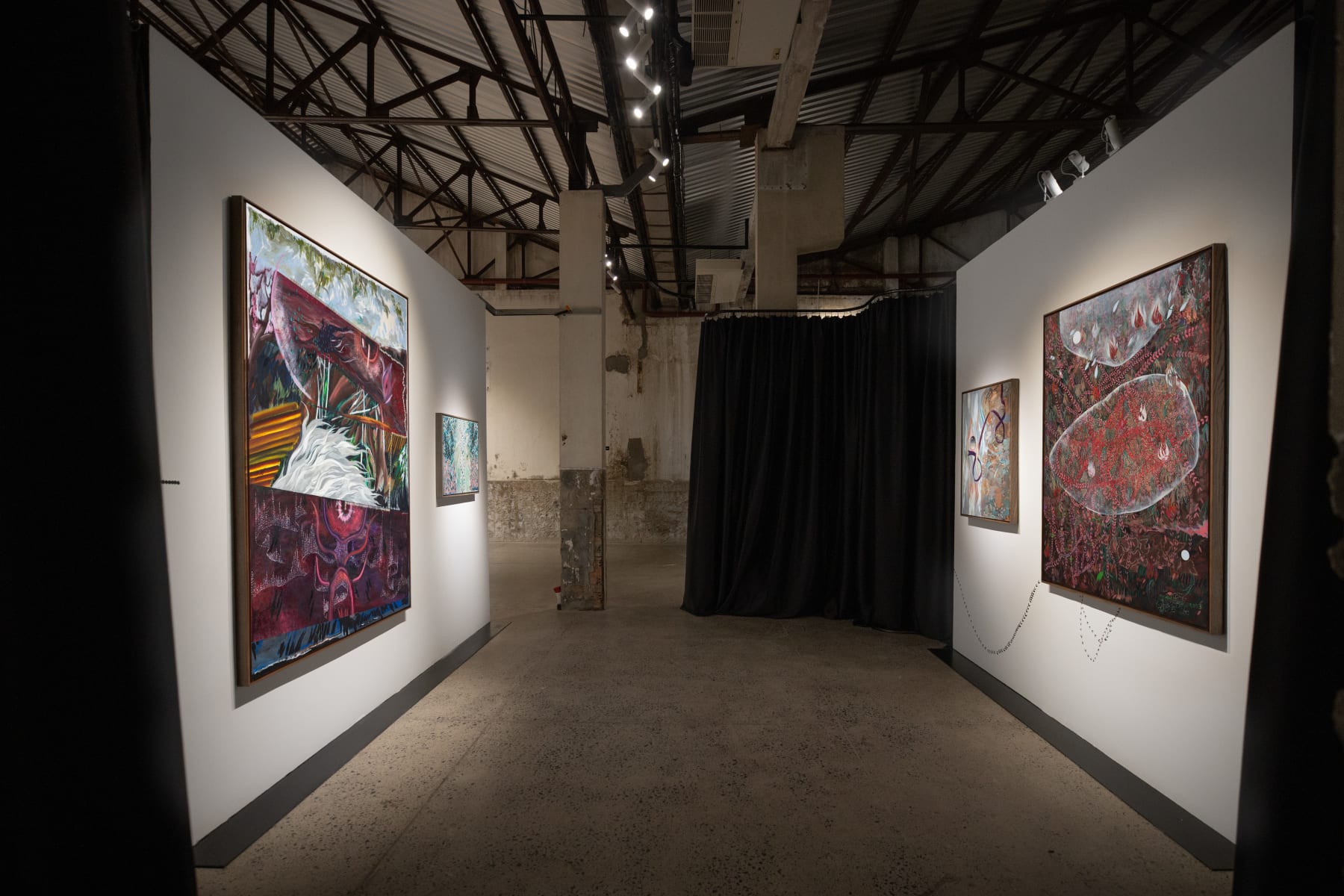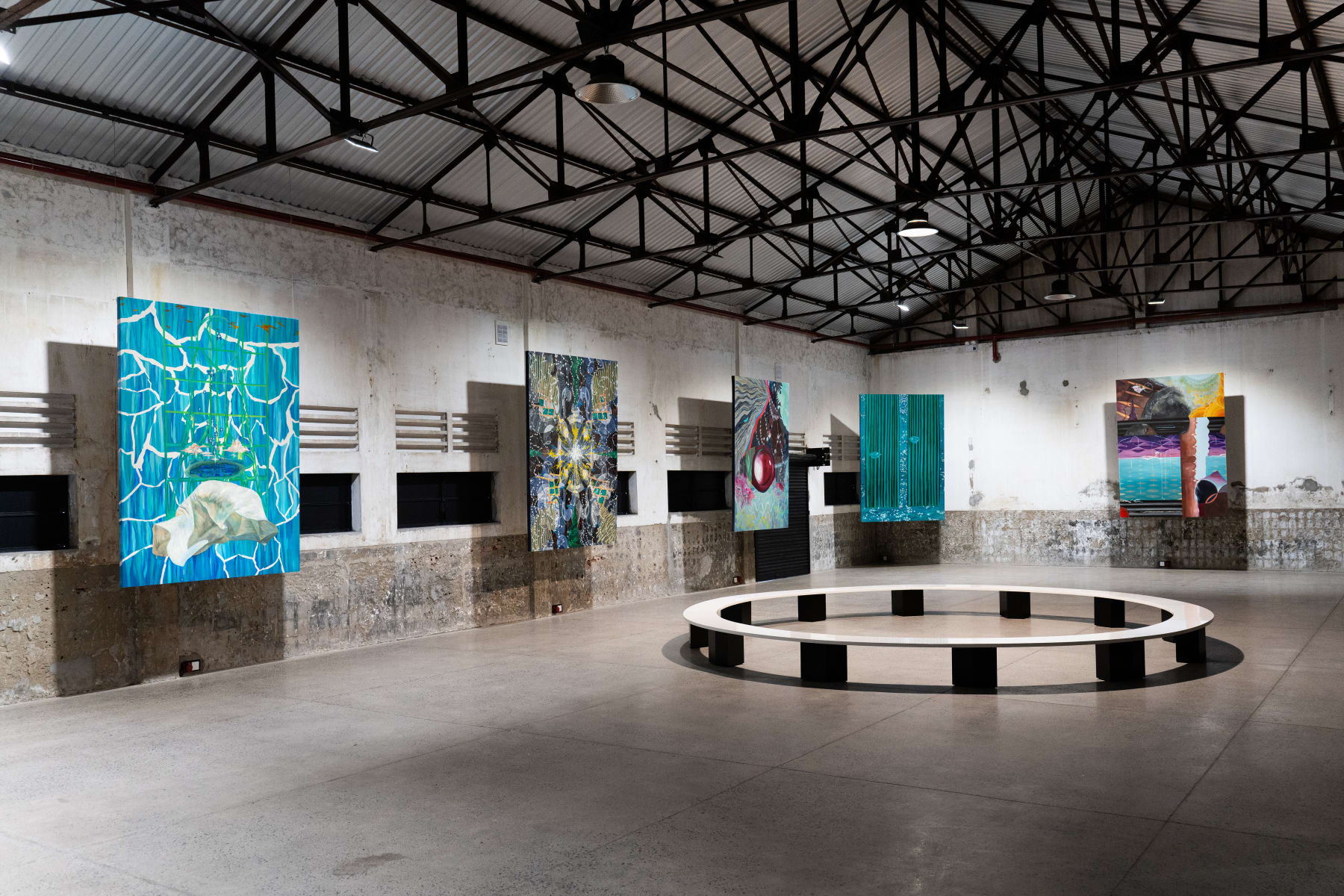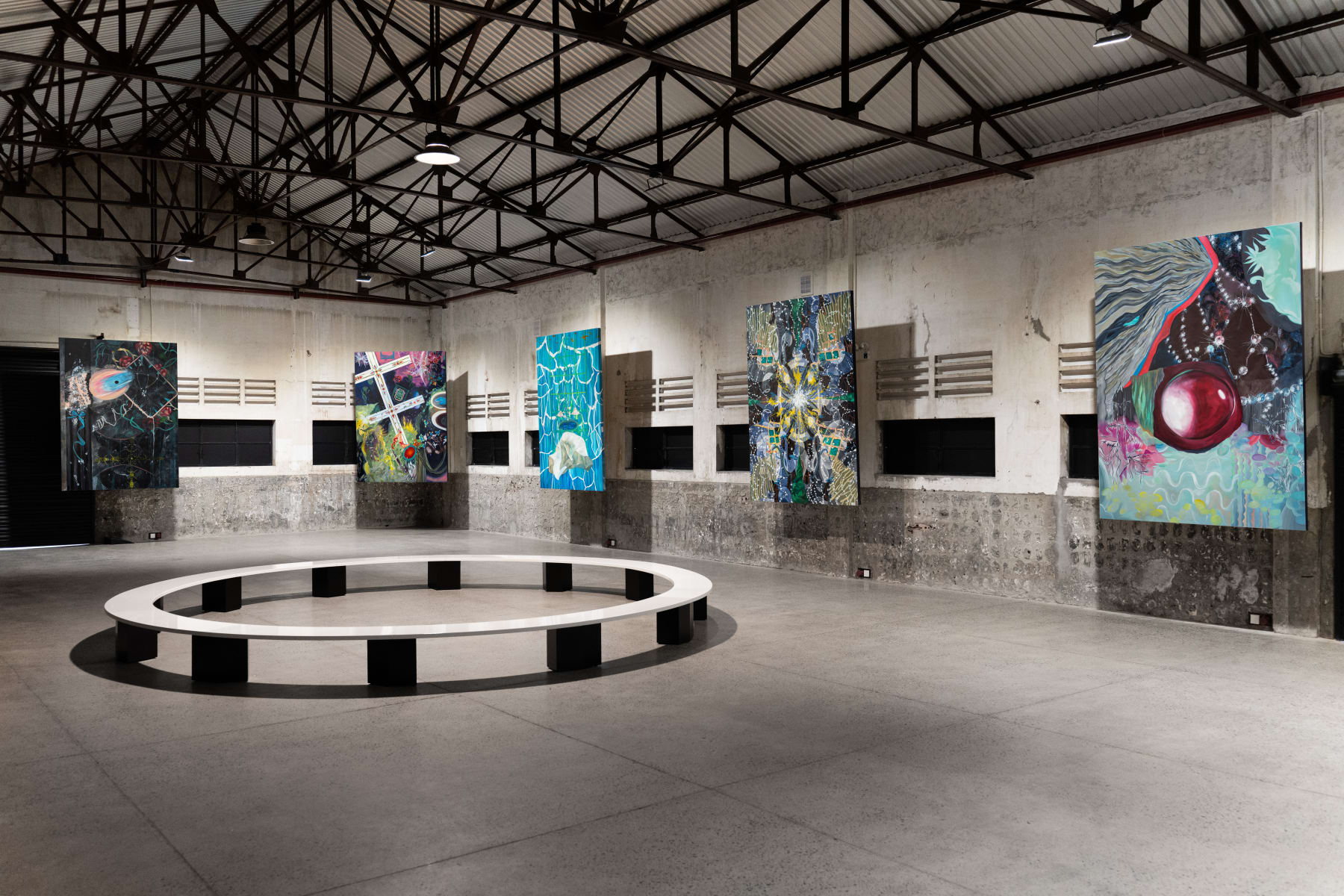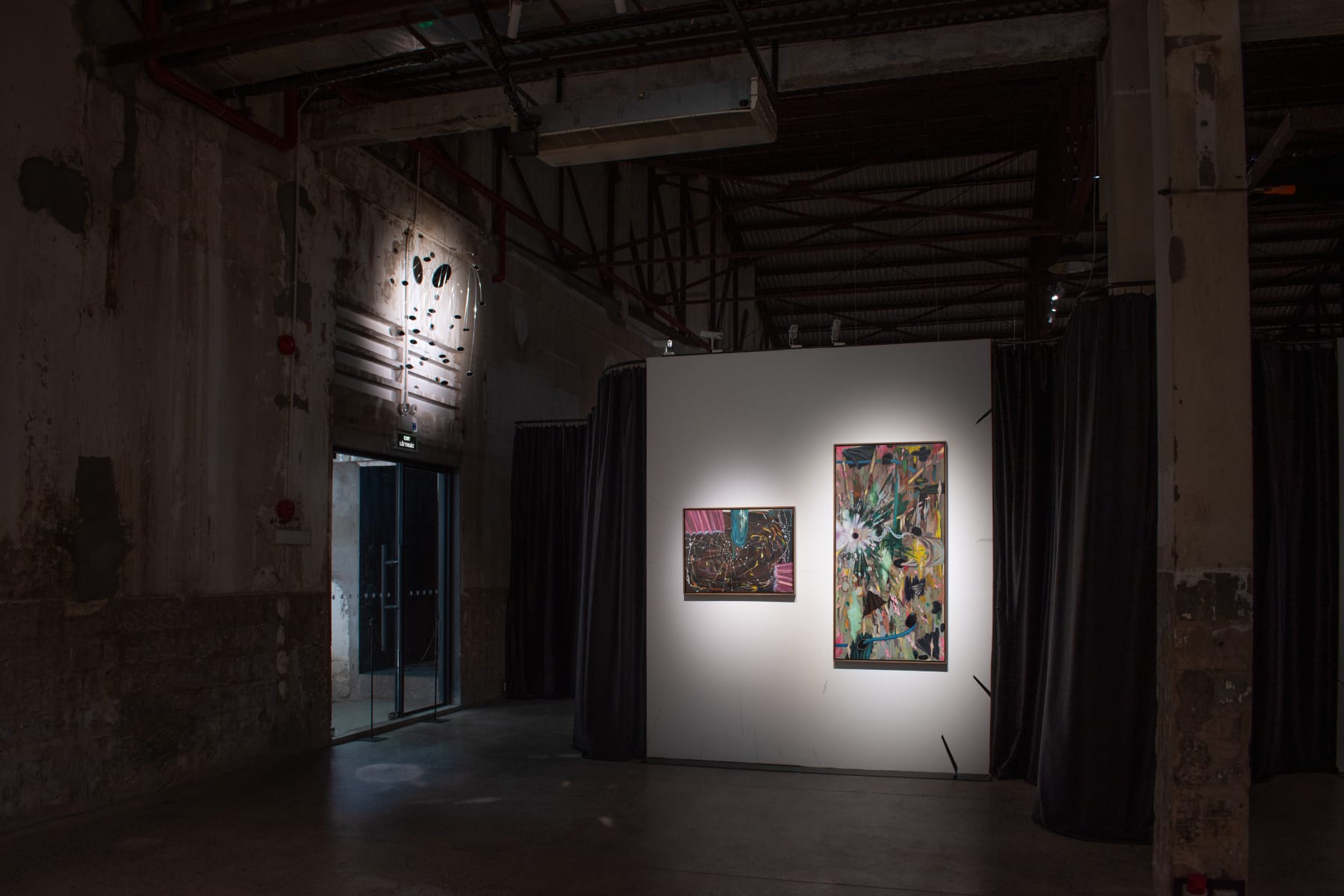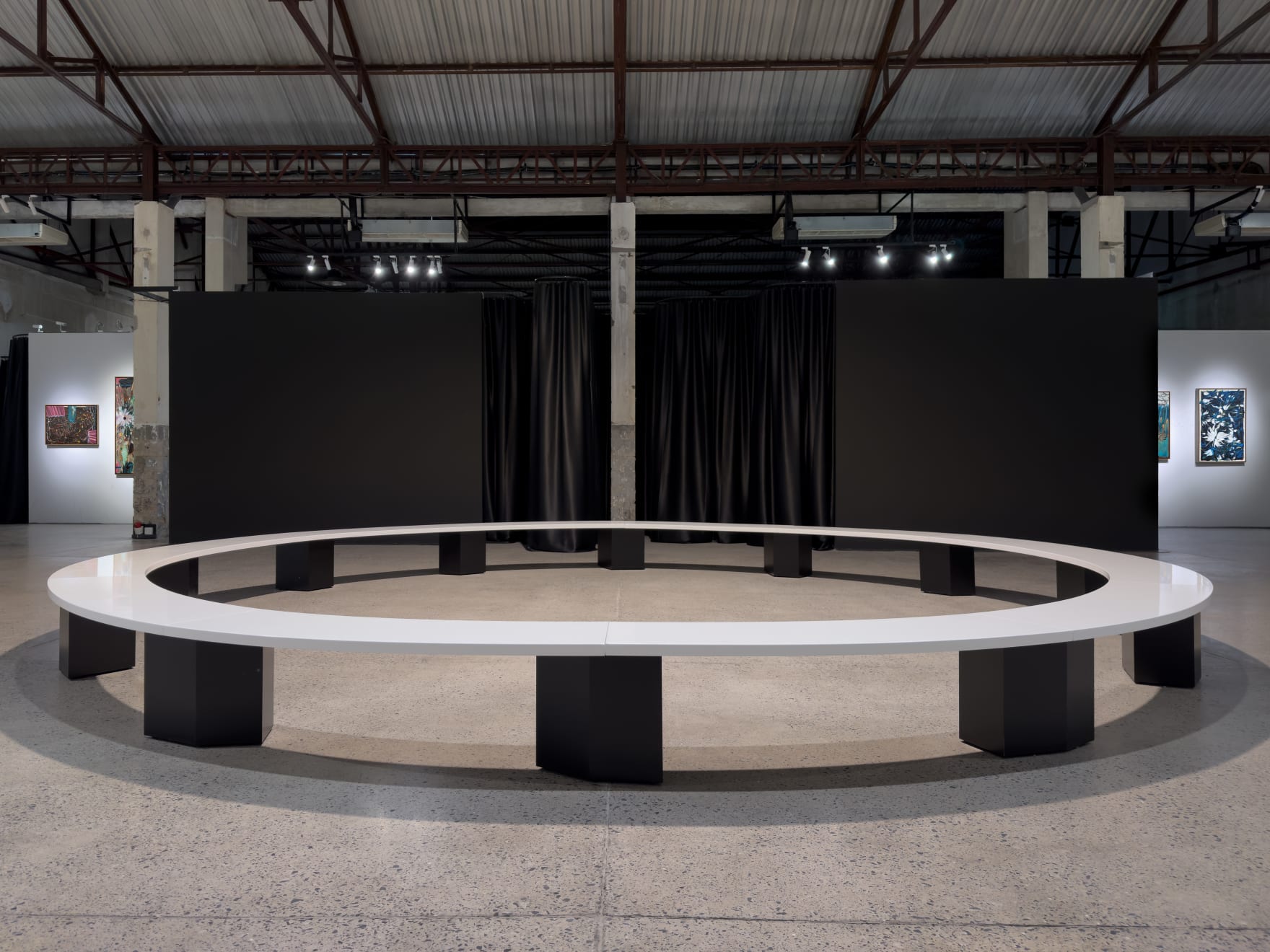In a significant and first-ever collaboration, Galerie Quynh and Gallery Medium are excited to present projecting a thought—an ambitious solo exhibition by Ngo Dinh Bao Chau curated by Thái Hà. Showcasing a new body of work comprising video installation, sculptures, monumental Trucchigraphy
fibre works and large-scale paintings at the expansive TDX Ice Factory, the exhibition explores how the vastness of the world is reflected in the body and, concurrently, how the body projects itself onto the world. Branching from the critical inquiries of her solo exhibition Towards Realist Socialization in 2020, projecting a thought now reimagines the house as a body that inhales and exhales light, built on an architecture of the sensorial.
Everything falls down, the flames go up. More a promise (or warning) than a title, the name of her true-to-scale cardboard recreation of a Frankfurt kitchen¹—the centrepiece of her 2020 solo—is now realised in a burn. In this video artwork that opens projecting a thought, a gentle fire eats away at the cardboard then quickly rages; the kitchen crumbles, leaving only hot ash to echo its existence. The embers of the votive burning signal a transformation in Ngo Dinh Bao Chau’s methodology: she retains an affinity for collaging imagery from a wide range of references, though this time not with the piercing eye of analysis. Instead, she allows herself to look, unfocused and absent-minded, beyond the surface of the image to zoom in on infinity².
With the wispy remnants of the kitchen, she reshapes the world to shape an internal world, making from literal ashes a galaxy of planets in orbit or insects busying the night sky. In and the ashes become fireflies, on cracked earth rests light in motion. Here, the body—a collective of the senses through which it experiences the world—takes shape through Bao Chau’s use of materials. Borrowing the Renaissance image of the cosmic body, the artist plays with vision’s correlation to fire and light, hearing to air, smell to vapour, taste to water, and touch to earth.
Positing that the body is inseparable from the world just as the body is a world, in organs of the infinite, Bao Chau freely drapes sheets of fabric-skin across the Ice Factory’s open space. On their surfaces, fibres of cornsilk, duckweed, and bamboo form images of cells that cluster as abstract organs. Her light-pierced skins reveal the permeability of the sensorial and, palpably, its affective impact on every cell, vein, muscle, organ. The body breathes in and air fills the lungs; it breathes in light, and shadows cast.
Traversing darkness into the light, an exhale, and cells erupt as flora, rain, and jets of sunlight. Bao Chau dilates depth and bulges time in a series of works on canvas that depict fragments of surrealist scenes. The artist’s hyperbolic visual space³ foregrounds a bodily perspective that is mutable, warping with the subject position of the observer and to the beat of their encounters. Arriving at eye of the moment, the minimalist sculpture reflects on living time, rather than abstract time dictated by the handles on a clock. As the viewers’ coming, sitting, and going form the work's rhythm, time is paced as it is experienced—uncountable, constantly becoming.
A congregation of eyes blinks light out the doors and sends the show’s vibrations with it. The viewer makes their exit and waterfall marks their body with its eye-shaped light. Exploring projecting a thought, the “body and [artwork] no longer function as discrete units, but as surfaces in contact, engaged in a constant activity of reciprocal re-alignment and inflection”⁴. In an exhibition that wholly collapses the demarcations between the internal and external, the body emerges not as container but as assemblage, where ash, earth, and plant fibre co-constitute with human flesh a hybrid ecology, always in process, always in relation.
¹ The work was created in collaboration with artist Nguyen Duc Dat and architect Laurent Serpe.
² Juhani Pallasmaa, “The Significance of the Shadow”, in The Eyes of the Skin (UK: Wiley-Academy, 2005), 46–49.
³ Hyperbolic space refers to a phenomenological model of visual perception in which depth and spatial relations are experienced as curved, elastic, and responsive to the body’s position. Unlike the fixed, infinite grid of Euclidean geometry, hyperbolic space warps with proximity: near objects appear stable, while the peripheries bulge or distort and distant horizons curve inward or upward.
Vivian Sobchack, “Breadcrumbs in the Forest”, in Carnal Thoughts: Embodiment and Moving Image Culture (CA: University of California Press, 2004), 17.
⁴ Elena del Río, “The Body as Foundation of the Screen: Allegories of Technology in Atom Egoyan’s Speaking Parts”, Camera Obscura 13, no. 2 (1996): 101.

